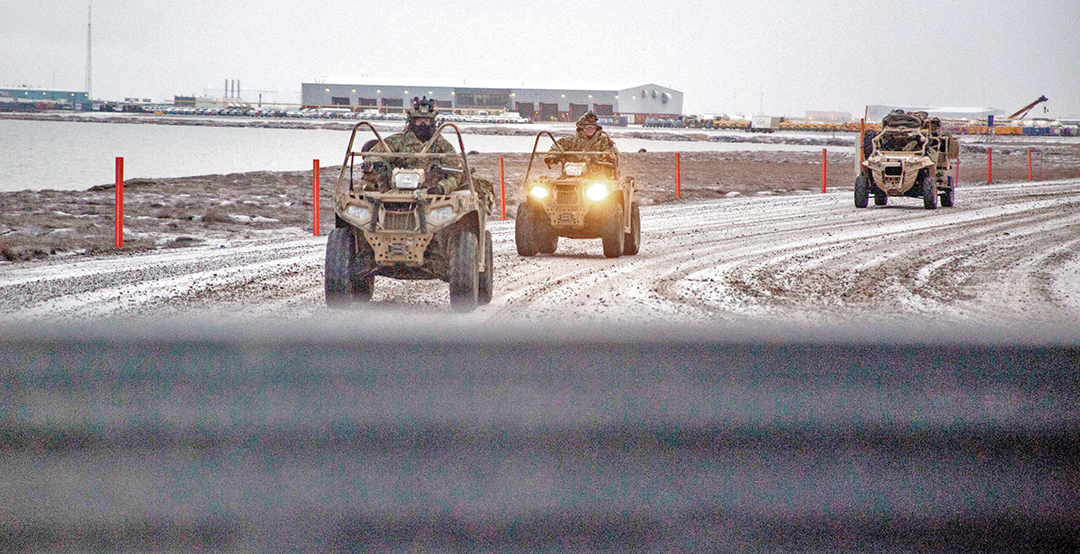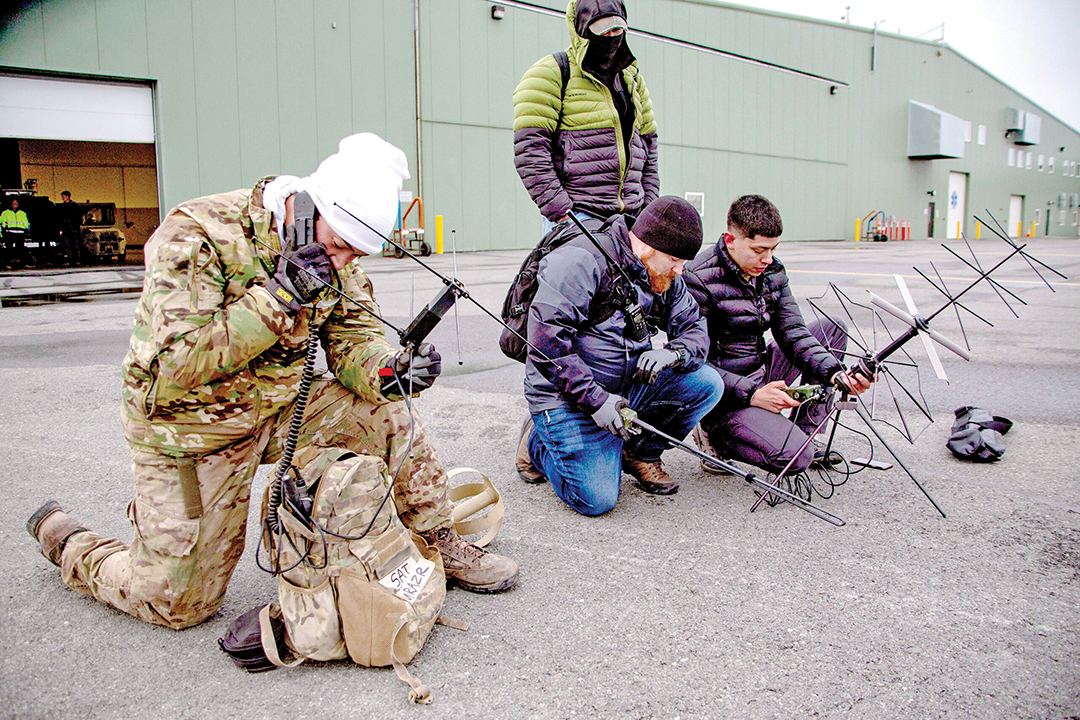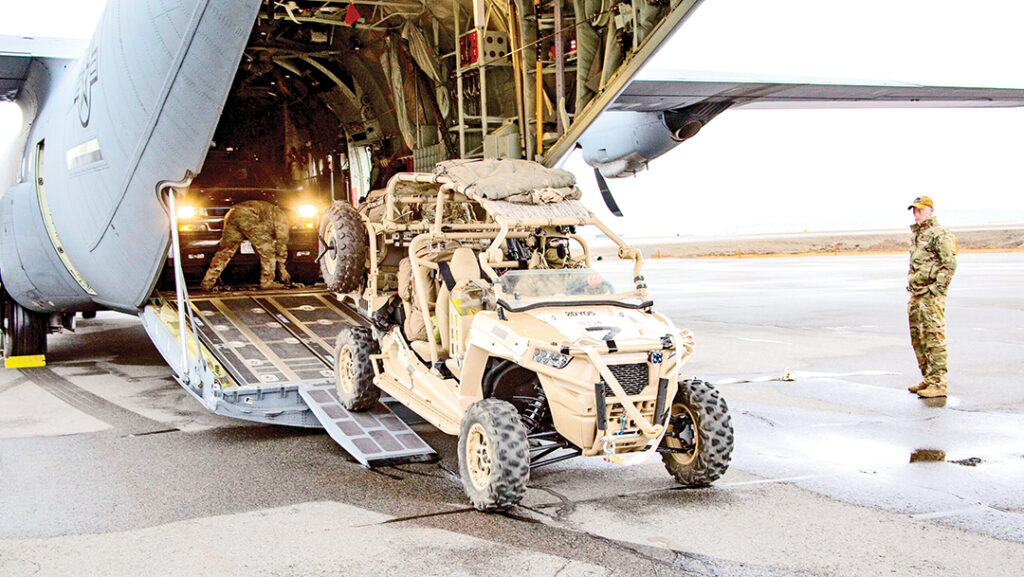Special Forces deploy to Alaska to simulate oil field defense
Story and photos by 10TH SPECIAL FORCES GROUP (AIRBORNE) PUBLIC AFFAIRS OFFICE
Editor’s note: The names of those serving in the 10th Special Forces Group (Airborne) are withheld for the safety of the Soldiers and their families.
Special Operations Command North (SOCNORTH) teamed up with Air Mobility Command to deliver a tailored special operations task force north of the Arctic Circle on minimal notice in September 2020.

SOCNORTH deployed a task force composed of a crisis response force planning element and a Green Beret team from the 10th Special Forces Group (Airborne) to confront a simulated threat from a terrorist group to Alaskan oil production.
The SOCNORTH team, an advanced command and control element, coordinated with civil authorities while the Green Berets conducted reconnaissance to provide an operational understanding for possible follow-on forces.
“The intent here is to ensure that we are all trained and able to leave on a moment’s notice to get on an aircraft across the city, load up and head to wherever the mission takes us,” said the 10th Special Forces Group’s detachment commander.
Established after 9/11, SOCNORTH’s primary mission is anticipating and planning for threats to the homeland.
The Arctic is rapidly gaining in strategic importance as a source of fossil fuels and maritime passage. Alaska, Canada and Russia account for nearly 10% of the world’s oil reserves, with the Alaskan Arctic holding the largest volume, according to the U.S. Geological Survey.

The task force transported all-terrain vehicles and a command and control vehicle to the Arctic from Peterson Air Force Base in Colorado Springs, Colorado, aboard a C-130J Hercules aircraft.
Mission planners highlighted the mobility challenges of working in the Arctic in the transition period between summer and winter, when daily temperatures typically average 27 to 37 degrees Fahrenheit.
“We’ve performed this mission before in the middle of winter, when the chief concern is the deep negative temperatures,” said the lead mission planner from U.S. Special Operations Command. “But, in a way, that makes the terrain easier as it’s frozen solid and snow machines have no issues.”
Mobility in September is a different story, he said, because the region has few maintained roads and the daily freeze-thaw cycle turns open terrain into variable marshland.
The largely flat region makes it challenging to find vantage points for reconnaissance, the planner said.
A substantial success of the exercise was that the team established direct communications with its Colorado Springs headquarters using high-frequency radio over a distance of more than 2,600 miles.

